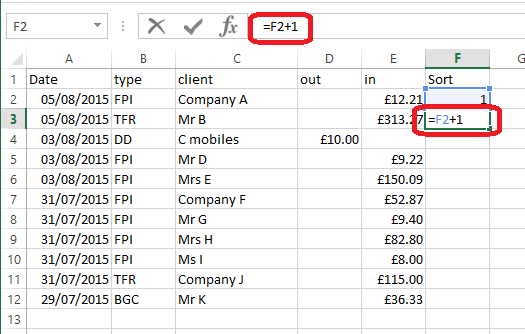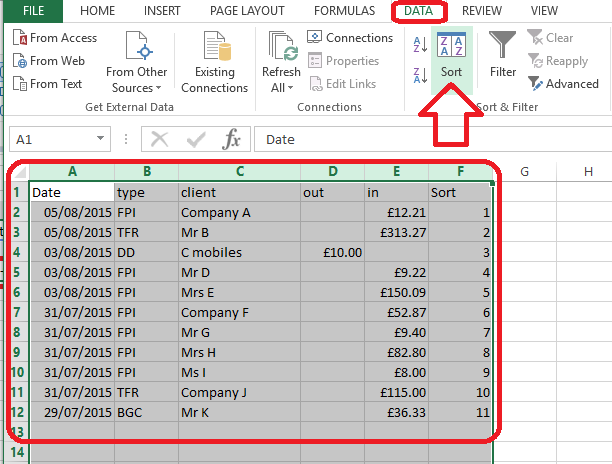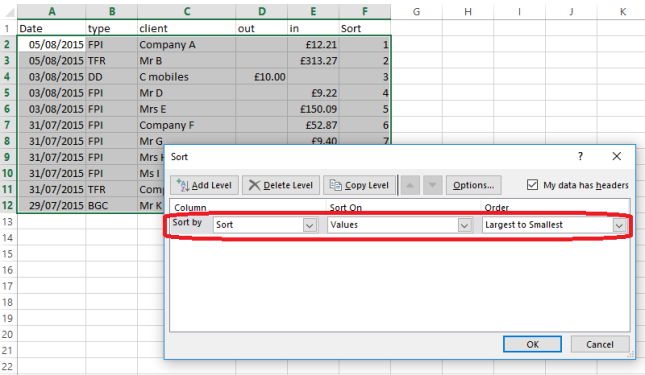Today we’re going to learn about the wonders of Ctrl-F and how it can help you to search for text almost anywhere.
We’re going to look at an overview of the basics in this article, then I’ll go into more detail on advanced searching and replacing in another one.
What does Ctrl-F mean?
Ctrl-F is shorthand for “press the control key and the F key at the same time“. It’s the way in which key combinations are expressed. You will have one or two Ctrl keys on your keyboard (I have two) and it’s usually easiest to press Ctrl, hold it down, then press F.

If you’re looking at a Word, Excel or Powerpoint document, a web page or, in fact, many other things, you will now be able to search for text in that document, on that page, etc. Let’s go through the different places you can use this.
Searching in Word 2007 using Ctrl-F
Word is one of the places where searching is most useful. It also offers the largest range of options for searching, and we’re just going to look at the most common today but watch this space for an article on advanced searching.
I use Ctrl-F to …
- Search for a place in a text by a word in its heading
- Search for tables / figures and references to them in a document to make sure they match up
- Search for chapter headings in a book / thesis when I want to check they have a consistent style
- Search for a name to check how it was spelled last time
and many other things.
When you have a Word document open, to bring up the search dialogue box, press the Control key and the F key at the same time. You’ll then be presented with the basic search box:

It will usually appear to the side of the document, so as not to obscure the text. Enter the text you wish to search for, in this case Richard Branson, and press the Find next button (or the Enter key). Word will highlight the text you’re looking for.
That’s great, but what if you want more accurate searching? Press the More >> button for more options:

Here, you have options to match the case, find whole words only, etc. For the moment, we’re going to concentrate on just these two (see the article on advanced searching for the other options).
If you choose Match case, it will search for only those words in the exact same case as the one in the search box. If you choose Find whole words only, it will look for only that text, not that text included in a longer word. We’ll have a look at how that works in just a moment.
Moving along the options, we have a Reading Highlight button. This will highlight all of the instances of your search word in your document. I find this useful if I’m writing a text to use for Search Engine Optimisation purposes and want to see how many times I’ve included a particular phrase:

Note: if you change your search term, you will need to Clear Highlighting before highlighting again, otherwise all of the original highlighting is shown.
The next option is Find In. This is useful if you only want to search a particular part of the text for your word. Highlight the section in which you want to search, and then choose Current Selection (or, if you’ve got a section highlighted for some other reason, choose Main Document.

Let’s have a look at some of these options in practice, using a rather odd paragraph I made up for illustration purposes:

Here, I’ve just searched for char, not worrying about any additional options. You can see that it’s found char, but also character, charlady and Char, because I didn’t specify that I wanted only the word form “char”.
If I want to only find “char” in the text, I need to tell Word to Match case and Find whole words only. Then I will get the desired result:

Searching in Word 2010 using Ctrl-F
Of course, they went and changed this to make it more useful and user-friendly in Word 2010 … I was a bit flummoxed when I first tried to use it, but you can get back to the dialogue box we’ve looked at above, and there are some additional useful features.
In Word 2010, if you press Ctrl-F, you’ll be given a Navigation pane to the left-hand side of the document:

Put your search term in the box and it will automatically highlight all of the instances of that word in the document, give you the number of times it appears, and list all the instances so you can click and visit each of them:

This is handy, and although you can do more things here to do with looking at the whole document, you can’t immediately refine your search to whole words only, match case, etc. But you can get to that familiar dialogue box.
Click the down arrow next to the search box and you’ll be presented with a list of options. We’ll look at the advanced ones next time.

For now, select Advanced Find, and a familiar dialogue box will pop up …

Searching in Excel using Ctrl-F
All of the other software in Microsoft Office uses Ctrl-F, however to a more limited and less customisable degree. In Excel, pressing Ctrl-F will give you this dialogue box:

Press the Options button and you have some options for where you search and the form of the word:

This works the same in Excel 2007 and 2010.
Searching in Powerpoint using Ctrl-F
In Powerpoint, Ctrl-F gives you a small dialogue box:

Again, you have enough options to be useful, but not the range of options you find in Word, and again, this works the same in Powerpoint 2007 and 2010.
Searching on web pages using Ctrl-F
I find this so useful, especially if I’m searching my own web pages for a word I’ve used or maybe misused (I used this a great deal in the great proof-reading to proofreading change I made a few years ago.
This varies according to the browser you’re using, but hitting Ctrl-F will always bring you up a search box of some kind:

- In Firefox, the search box appears at the bottom of the screen and gives you the option to highlight all and match case
- In Chrome, the search box appears at the top of the screen and gives you the option to search whole word only and match case
- In Internet Explorer, the search box appears at the top of the screen but doesn’t give you any options
Please note that these options might change in future as the browsers are updated.
How to search a PDF using Ctrl-F
One of the few things that you can’t search using Ctrl-F is a pdf document. However, most readers (I use PDF-Exchange), as well as having their own search functionality on the page, will allow you to use Shift-Ctrl-F to search!

You have some options:

And it works in a similar way in Adobe, too.
If this doesn’t work, there is always a search function in your pdf reader itself, for example:

Searching anywhere using Ctrl-F
As well as the standard Microsoft Office products and web pages, you can often search other interfaces using Ctrl-F, too. For example, because my WordPress interface uses the web browser, I can search for words in posts I’m writing:

I can use it in Skype:

And I’ve even tried it in my transcription management software, ExpressScribe, and you can use it there, too!

Today we’ve learned about how to use Ctrl-F to search almost anywhere in any type of document or application.
Coming soon – advanced searching in Word and Search & Replace / Go To.
———————
This is part of my series on how to avoid time-consuming “short cuts” and use Word in the right way to maximise your time and improve the look of your documents.
If you’ve enjoyed this post and/or found it useful, please take a moment to comment (I’ll just ask you to provide a name and email address; you don’t have to sign in to WordPress) and share the post using the buttons you can see below. Thank you!
Please note, these hints work with versions of Microsoft Word currently in use – Word 2003, Word 2007 and Word 2010, all for PC. Mac compatible versions of Word should have similar options. Always save a copy of your document before manipulating it. I bear no responsibility for any pickles you might get yourself into!
Find all the short cuts here …










































































